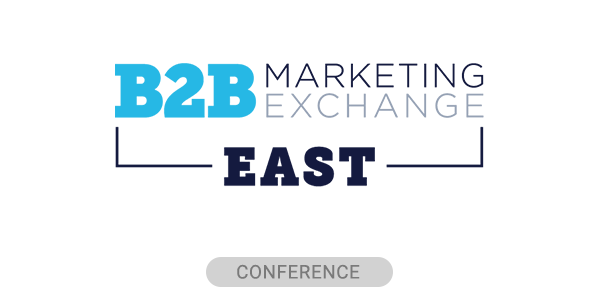Everyone agrees that artificial intelligence (AI) is a major new technology platform that is going to transform how work is done.
Initially, AI will be utilized to enhance a worker’s quality of work and efficiency— their ability to accomplish more in a shorter period of time. In the intermediate term, it will allow for greater automation of work. In the intermediate term, Gen AI will begin to enhance management decision-making and eventually take over a certain portion of that leadership role.
Longer term, AI will allow companies to do things that they currently cannot do. It will enable large amounts of data to be more deeply and more quickly analyzed to provide new strategic insights. Superior designs and greater creativity, including new inventions, will result from incorporating AI into the research and development process.
The AI Revolution
AI will be able to manage entire organizational processes and will allow faster and better responsiveness to rapid environmental change. It will enhance forecasting, analysis of complex scenarios and, in general, the ability to peer into the future. It will transform some entire industries and professions. As technology often does, it will cause some jobs to disappear— manual labor jobs and management jobs— but it will result in newer, more advanced jobs coming into being. AI will eventually allow for smaller, flatter organizations.
On the one hand, the public tends to overestimate how fast a new technology platform will be integrated into society and the economy. But each new major technology platform, from electricity to telephones to the internet, have taken less time to diffuse through society than the previous one. Said another way— it will take longer than some of the prognosticators are predicting, but less time than the internet (the last great major technology platform) to be fully adopted.
Legacy Corporations Need New Outlook
Legacy corporations will be some of the most vulnerable to the transformation that is coming via AI. They are usually enjoying a certain level of success today and fail to acknowledge that much of that success is due to major innovations in the past. As a result, they are usually comfortable with things the way they are today.
They are large, slow-moving, bureaucratic, and siloed in their structures. This makes them slow to see coming changes in the environment. In fact, they tend to be inwardly focused with a heavy emphasis on efficiency and cost-saving.
Historically, large companies have spent a great deal of effort on creating moats. These moats can be in various forms. They may be in the form of barriers to entry. They can try to use their size, or lock up key elements of the distribution channel, or undercut emerging competitors with lower costs.
They can try to create high switching costs. They may just try to keep adding features to their existing products or services faster than their competitors. But, of course, they all reach a point where the features are no longer valued by the customers and the products become commoditized.
Strategizing Your AI Innovation
To stay competitive and maintain leadership positions, they simply must move away from “moat maintenance.”
The other major factor working against legacy organizations is resistance to change. Even if senior managers recognize a need to change, altering the direction of this giant ship is difficult and seemingly daunting.
AI is a groundbreaking technology that will be making a major impact for decades. To be clear, however, technology is not innovation. Technology is an enabler of innovation. This distinction is important for helping one avoid the trap of falling into tech hype. Virtually every major company now says it is using AI. But are they using AI in an intelligent manner to create important and valuable innovation?
What Can AI Do For You?
Rather than just throw AI against the wall and seeing what will stick, it is important to define the type and form of innovation that you are trying to achieve.
- Are you significantly enhancing the customer experience? Is it creating dramatically improved products?
- Is it significantly lowering your operating costs?
- Is it streamlining your supply chain?
- Is it allowing you to alter your business model?
- Is it allowing you to adapt to rapid change in the environment?
The tendency is to start with the technology and think about where it can be quickly applied. However, with strategic innovation, you will want to start with the strategic endpoint that you want to create and then figure out how to utilize and generate the technology to accomplish it.
Understanding The Impact AI Can Have
It is certainly OK to provide AI to members of your organization and allow them to discover how it can enhance their work. That is part of continuous improvement, which will always be necessary and important. However, organizations that want to be strategic will think bigger and envision what is possible beyond the current paradigm.
It is easy to be caught up in the AI frenzy. It is important, however, to lift one’s head above the fray and be strategic about where AI can have the greatest impact. My final thought on the subject is that this is not just a six-month or one-year project. We haven’t even begun to see all of the potential applications and ramifications of this technology. The potential is almost unimaginable.
 Merle Symes, author of The Innovation Edge: How Large Companies Lose It And How To Get It Back, leads The Provenance Group, a consultancy dedicated to business innovation and transformation. He works with senior managers and boards of directors to reignite the innovative spirit of mature organizations. He has assisted senior management teams in organizations ranging from Fortune 500 companies to early-stage ventures. Symes’ previous executive positions include: CEO of the tech venture, Graematter; president of Ulrich Medical; and vice president, external technology for Bausch & Lomb. He has held board director positions on both public and privately held companies as well as university and charitable organizations. Symes holds an MBA from the Wharton Graduate School and a B.S. in chemical engineering from the South Dakota School of Mines & Technology.
Merle Symes, author of The Innovation Edge: How Large Companies Lose It And How To Get It Back, leads The Provenance Group, a consultancy dedicated to business innovation and transformation. He works with senior managers and boards of directors to reignite the innovative spirit of mature organizations. He has assisted senior management teams in organizations ranging from Fortune 500 companies to early-stage ventures. Symes’ previous executive positions include: CEO of the tech venture, Graematter; president of Ulrich Medical; and vice president, external technology for Bausch & Lomb. He has held board director positions on both public and privately held companies as well as university and charitable organizations. Symes holds an MBA from the Wharton Graduate School and a B.S. in chemical engineering from the South Dakota School of Mines & Technology.







